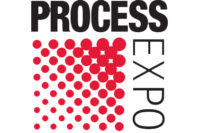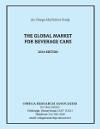The Dow Chemical Company is more than a manufacturer of polyethylene, specialty resins and laminating adhesives. We are a provider of solutions that promote sustainability through the entire product lifecycle. In our efforts to bring sustainable packaging solutions worldwide, we advocate for the best practices that will allow the value chain to innovate for growth.
Packaging is good for the economy. You’ve probably never thought of it that way, but it’s true. Plastic packaging has so many benefits we take for granted – not only does it protect goods from damage, but it also protects products internally and externally to prevent spoilage and keep out contaminants. Plus, it diminishes product waste. When compared to other packaging options, plastic packaging reduces the weight of materials needed, which leads to:
- Decreased fossil fuel consumption in manufacturing
- Lower energy use for transportation
- Reduced energy use for storage and refrigeration
It also offers retailers and brand owners materials that can allow their products to increase shelf appeal, while meeting corporate sustainability goals.
A Stand-Up Solution
To meet the demand for a more sustainable alternative, Dow recently developed 100 percent Polyethylene (PE) Stand Up Pouch (SUP) technology, an exciting innovation that highlights our commitment to meeting consumers’ expectations and helping to create a better future for the environment. The SUP’s features include:
· Complete and hermetic sealing to avoid leaks
· Excellent puncture and tear strength
· Recyclability with existing PE bag and film recovery streams
While some applications still need to use multiple materials to meet performance requirements, improvements to technology provide brand owners an option for a 100 percent recyclable package for non-barrier applications. The SUP offers the option to create a unique, glossy, and aesthetically pleasing package that can showcase certain frozen products, liquids, dry foods and construction materials.
A Complete Lifecycle
One of Dow’s goals is to expand end-of-life options for plastic packaging. By capturing the value from used packages, we are working to shift the perception of packaging at its end-of-life from “waste” to “valuable resource.”
To do so, Dow developed the “100% Recycling of Packaging” philosophy to help the industry and consumers understand the full value of plastics packaging. With this shift in thinking, we hope that in the future all packages can be put in recycle bins, instead of trash cans. This would allow packaging material to be mechanically recycled, chemically transformed into feedstocks or fuels, converted into new energy or composted – assuring that the full value of the used materials is captured.
Recovery –A New Approach
By promoting mechanical recycling, composting, chemical transformation and energy recovery, Dow firmly believes that “100% Recycling of Packaging” can be achieved across the globe by adding to the 3R approach of the past – Reduce, Reuse, Recycle. The new approach, the 4R, adds “Recover,” indicating the need to change the way we approach sustainability by using a 360 perspective. Doing so will encourage the industry to see the full potential and value in plastics packaging.
Energy recovery, the practice of recovering the embedded energy in used materials, is a “best-in-class approach” that can offer additional end-of-life options for retired packages. Energy recovery has two main advantages:
· Diverting waste from disposal in landfills
· Providing an alternative energy source, reducing the dependence of natural gas, oil and coal
Dow strongly advocates for energy recovery by undertaking initiatives that prove its value and engaging in thought leadership roles to build industry interest, advocacy and involvement.
There are several significant findings supporting the value of energy recovery. In 2010, our Michigan Operations discovered that 96 percent of available energy was recovered after 578 pounds of used linear low density polyethylene was thermally recycled – that is equivalent to 1.1 million British Thermal Units (BTU) of natural gas. The team conducted six additional tests in 2011, finding that 100 tons of non-recycled plastics (NRPs) were used to save two billion BTUs of energy.
Recycling for the Future
To achieve “100% Recycling of Packaging,” the entire value chain will need to adopt this mindset. Material Recovery Facilities (MRFs), waste haulers, local government authorities, plastics associations and brand owners will have to collaborate to increase the industry’s adoption of energy recovery practices and other emerging technologies. We understand that we will have to address and overcome many challenges and we are committed to collaborating and developing solutions to drive increased recovery rates.
Every member of the value chain will need to adopt practices that demonstrate and document the process’ many benefits, deliver easier methods for collection, recovery and mechanical recycling to consumers and the industry, and develop an infrastructure to manage “100% Recycling of Packaging” initiatives. This is all while preserving the quality and value of the industry’s recovered materials. Though it won’t be an easy shift, it is a worthwhile one.
Through innovation, collaboration and advocacy, Dow believes that the industry can solve some of the world’s most challenging problems. As a global leader, Dow has the market experts, resources and relationships to deliver innovative solutions that maximize plastic packaging’s value during its entire lifecycle. The Company continues to collaborate with value chain members to recover the energy from end-of-life plastics and to make “100% Recycling of Packaging” a reality.




